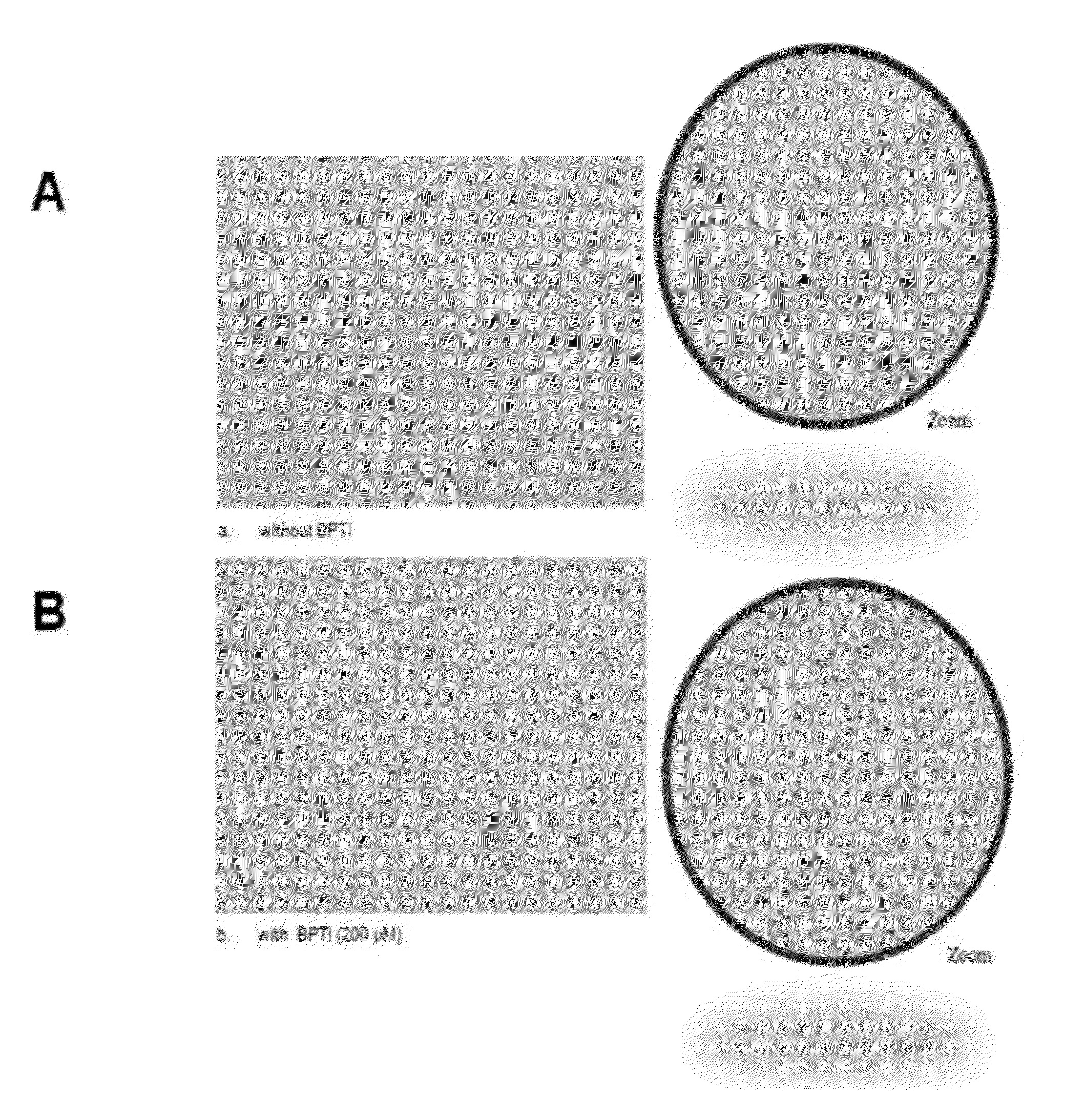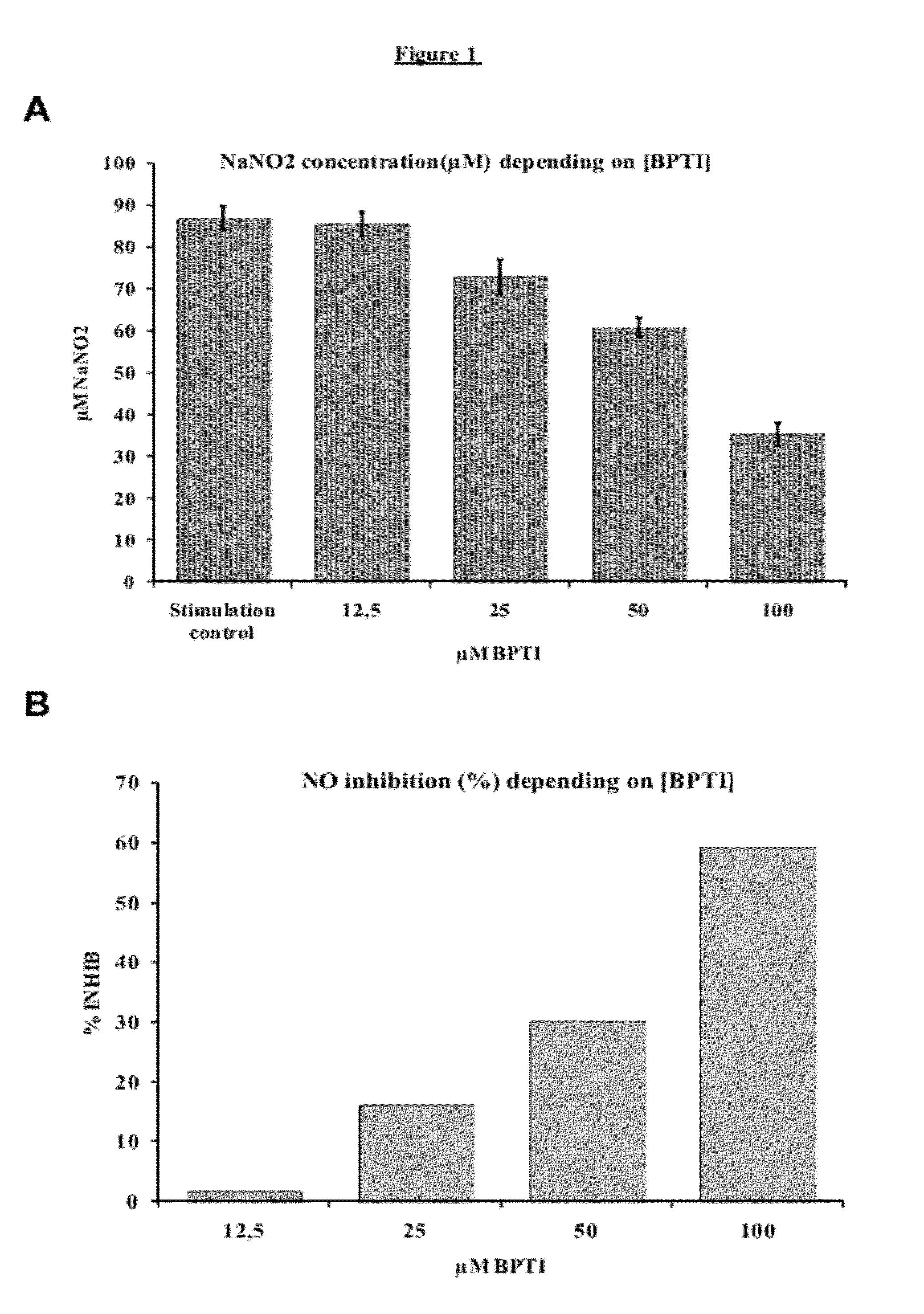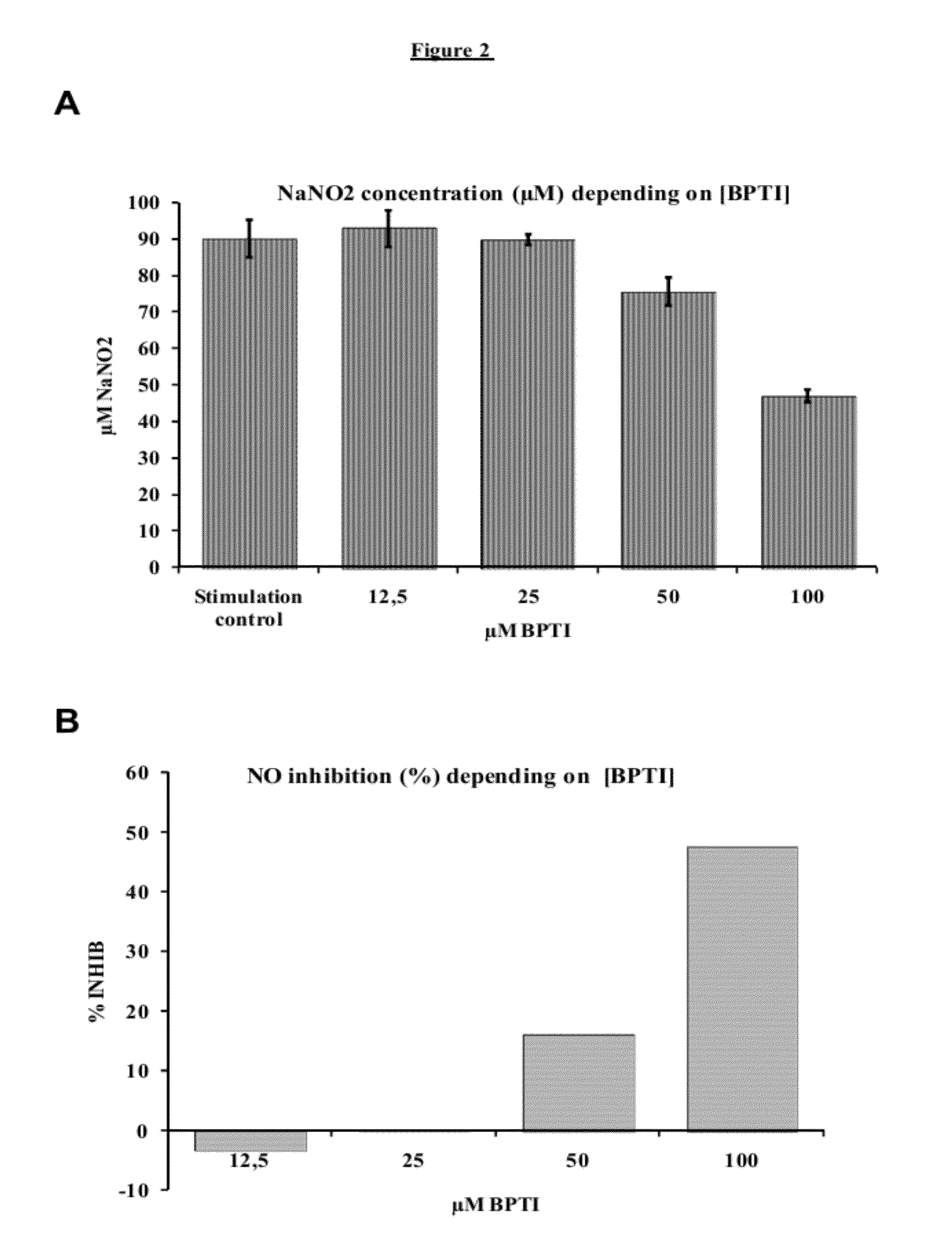Use of aprotinin for treating parasitic infections and prognosing bovine trypanotolerance
- Summary
- Abstract
- Description
- Claims
- Application Information
AI Technical Summary
Benefits of technology
Problems solved by technology
Method used
Image
Examples
example 1
Determination of the Effect of BPTI on Macrophage NO
[0071]Macrophages have a decisive role in the host response to protozoon infections. They are involved in the majority of inflammatory and immune responses. In the course of trypanosomosis infection, macrophages increase in number and size. Following macrophage activation, an induced enzyme, NO synthase, produces large quantities of nitrogen monoxide (NO). The purpose of this series of experiments is to functionally validate the ability of BPTI to induce NO production inhibition in mouse and bovine macrophages, via the action thereof on NO Synthase. The effects of BPTI on NO production were tested on two mouse macrophage lines (J774.2 and RAW 274.7) and one bovine macrophages derived from circulating monocytes.
1. NO Production Inhibition by J774.2 Macrophage Line
[0072]Two different vials of the J774.2 line were used at the 8th and 9th passages. The cells from these vials were placed in culture in parallel, and the tests were tripli...
example 2
Effects of BPTI on Parasite Viability and Growth
[0083]1. Effect of BPTI on the Viability of Trypanosoma congolense IL1180
[0084]a) Microscopic observations:
[0085]The first microscopic observations revealed the effect of BPTI on parasite morphology (see FIG. 6). Before adding BPTI and for measurement times: 1.5 hours, 17 hours and 24 hours, the parasites (Trypanosoma congolense IL1180) are clearly visible; their form is as expected (fusiform), and they are mobile. However, the mortality becomes increasingly visible over time. The impact of BPTI on morphology is perceptible 17 hours (and thereafter) after adding BPTI to the culture. Spherical forms are observed which are characterized by a state of stress of the parasites.
[0086]b) Viability of Trypanosoma congolense IL1180 Measured by FACS:
[0087]In order to analyze the effect of BPTI on parasite viability, flow cytometry measurements were made at different times (1.5 hours, 17 hours, 24 hours and 48 hours after adding 100 μM or 200 μM ...
example 3
Effects of BPTI on Parasite Lysate Enzyme Activity
[0100]The molecules produced, excreted or secreted by the parasite have a significant impact on trypanosomosis diseases. Some molecules have already been identified as playing a major role in the condition. This is the case of parasite proteases such as congopain, a trypasomal cysteine protease having 33 kDa detected in the systemic circulation of cattle infected with Trypanosoma congolense (Authié et al., Int. J. Parasitol., 2001, 31: 1429-1433). It is also the case of Oligopeptidase B (OP-Tc), a trypanosomal serine protease also detected in the blood circulation (Morty et al., Mol. Biochem. Parasitol., 1999, 102: 145-155), but which, unlike congopain, is released in favor of parasite lysis induced by host responses. This enzyme is not degraded, it retains a significant catalytic activity detectable in the serum of infected animals (Troeberg et al., Eur. J. Biochem., 1996, 238: 728-736).
[0101]The purpose of this series of experiment...
PUM
| Property | Measurement | Unit |
|---|---|---|
| concentrations | aaaaa | aaaaa |
| concentrations | aaaaa | aaaaa |
| weight loss | aaaaa | aaaaa |
Abstract
Description
Claims
Application Information
 Login to View More
Login to View More - R&D
- Intellectual Property
- Life Sciences
- Materials
- Tech Scout
- Unparalleled Data Quality
- Higher Quality Content
- 60% Fewer Hallucinations
Browse by: Latest US Patents, China's latest patents, Technical Efficacy Thesaurus, Application Domain, Technology Topic, Popular Technical Reports.
© 2025 PatSnap. All rights reserved.Legal|Privacy policy|Modern Slavery Act Transparency Statement|Sitemap|About US| Contact US: help@patsnap.com



